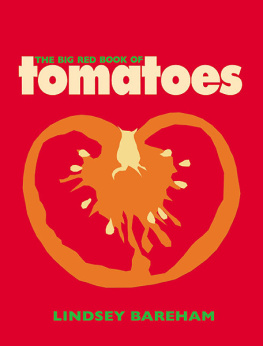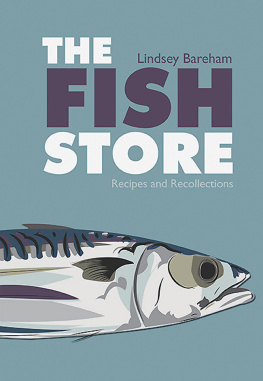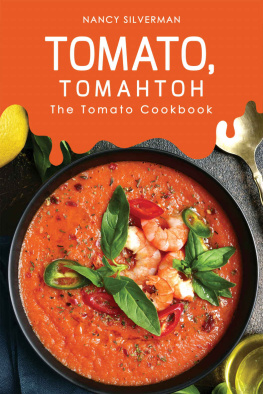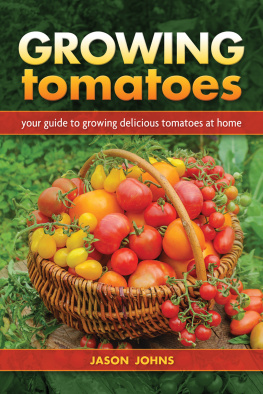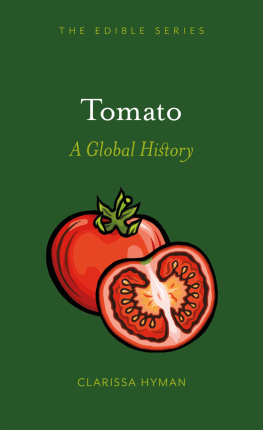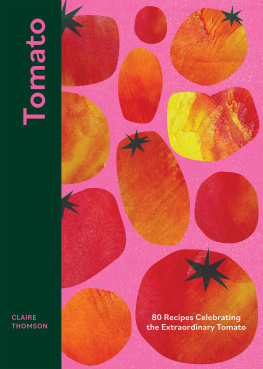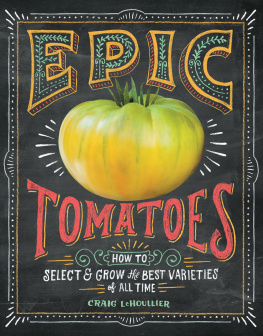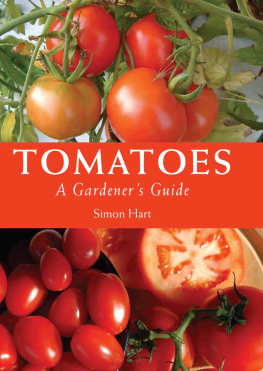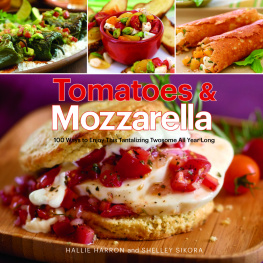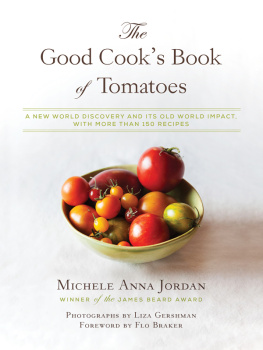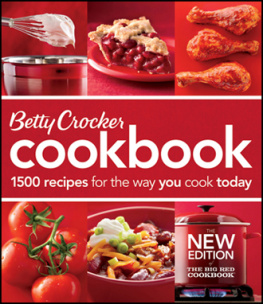
BY THE SAME AUTHOR
IN PRAISE OF THE POTATO
A CELEBRATION OF SOUP
ONIONS WITHOUT TEARS
THE LITTLE BOOK OF BIG SOUPS
SUPPER WONT TAKE LONG
A WOLF IN THE KITCHEN
JUST ONE POT
DINNER IN A DASH
THE FISH STORE
PASTIES
With Simon Hopkinson
ROAST CHICKEN AND OTHER STORIES
THE PRAWN COCKTAIL YEARS
This new edition published 2011
by Grub Street,4 Rainham Close, London SW11 6SS
www.grubstreet.co.uk
First published by Michael Joseph in 1999
Copyright Lindsey Bareham, 1999, 2011
Design and jacket design: Sarah Driver
The moral right of the author has been asserted.
All rights reserved. No part of this publication may be reproduced, stored in a retrieval system or transmitted
in any form or by any means, electronic, mechanical, photocopying, recording or otherwise without
the prior permission of the publisher.
A CIP catalogue for this book is available from the British Library
ISBN 978-1-908117-12-0
EPUB ISBN: 9781909166660
Printed and bound in by MPG Ltd, Bodmin, Cornwall
This book is printed on FSC (Forest Stewardship Council) paper
CONTENTS
ACKNOWLEDGEMENTS
Tomatoes, as this book became known in my house, lingered on so long, became so all-engrossing, that no one, least of all me, believed I would ever finish. So much so, in fact, that the phrase after tomato is a code for Ill do it later, but Ill probably never get round to it. There are so many fabulous ways of eating tomatoes, both raw and cooked, that I found it impossible to stop researching, cooking, and eating.
The best tomatoes we ate were grown in Italy, the south of France, and from gardens in Cornwall, Henley-on-Thames, and West London. Most were bought from my local greengrocers, Adamous & Sons, sadly now closed, and Andreas Fine Fruit and Vegetables, in Chiswick, and many more from street markets and greengrocers all over the place, from Marks & Spencer, Sainsbury, Safeway, Tesco, and the other multiples. Friends and colleagues have shared a wealth of knowledge, experience and recipes. Lynda Brown, who grows many varieties of tomatoes every year, was particularly helpful, so were Dottore Nino Squillacciotti, Emilio Regazzoni and Suzanna Gelmetti of Cirio Ricerche in Italy. Josa and Thoby Young, of the Fresh Food Company, Michael Michaud, of Peppers By Post, Alan Gear, of Ryton Organic Gardens, the staff at Books for Cooks, Antonio and Priscilla Carluccio, Roger de Freitas, Sandra Fairbank, Stan Hey, Giles Macdonagh, Emily Green and Sybil Kapoor filled in a few gaps. Many chef friends and other cookery writers helped consolidate ideas and recipes and particular recipes are credited throughout the book. However, special thanks to Simon Hopkinson, Ian Bates, Paul Merrony, Rose Gray, Alastair Little, Michel Roux and David Dorricott. The books I found particularly inspirational were: Michel Gurards Cuisine Gourmande and Cuisine Minceur, translated by Caroline Conran, The River Caf Cook Book and The River Caf Cook Book 2 by Rose Gray and Ruthie Rogers, Alastair Littles Keep It Simple and Italian Kitchen, Deborah Madisons The Greens Cookbook, Richard Olneys A Provenal Table, Franco and Ann Taruschios Leaves from the Walnut Tree, and Jean and Pierre Troisgros Nouvelle Cuisine. Also indispensable were Joanna Blythmans The Food We Eat and Lynda Browns The Shoppers Guide to Organic Food. On a more personal level, special thanks to my sons Zach and Henry, to my agent Bruce Hunter, to my editor Jenny Dereham, copy-editor Hazel Orme, and Liz Moscrop and Jane Grofski.
Most importantly, again, thank you to Andrew Payne and HP, which could be getting its last vote of thanks.

It hardly seems possible that it is nearly twelve years since I first started writing the original edition of this book and I began after three years of cooking and researching the fruit we treat as a vegetable. Like all my single subject books potatoes, soup and onions before this one I could think of nothing else as I wrote. My love of cooking with tomatoes was the reason I started the book and I was obsessed with tomatoes. I am still surprised by the unusual recipes I find tucked away in the book and its been a pleasure to be forced to re-read it from cover to cover looking for printers errors. I could easily fill another book with recipes revolving around tomatoes but although I have added a few, I didnt want to remove any. The biggest change in the last decade has been the quality of British tomatoes and their availability. In the late nineties we were in the throes of a so-called tomato revolution, when tomatoes were starting to be grown for flavour. The British Tomato Growers Association had just been formed and they were determined to raise the profile of homegrown tomatoes and fight back against imports, particularly the long shelf-life varieties in classic sizes, from Spain, Holland and Poland, in particular. They also set about lengthening the tomato season from May to December. This is confusing for people who grow their own, who know that the native home grown season is late July, if youre lucky, through the autumn and the last green fruit that refuses to ripen. Many supermarkets, notably Waitrose and Marks & Spencer, now major on British tomatoes, particularly the intensely flavoured Isle of Wight fruit, and take pride in selling tomatoes that taste as good as they look. The range, particularly of cherry tomatoes, is immense. Increased fuel prices have had a huge effect on imports, particularly, ironically, from Jersey and Guernsey, and improved indoor growing technique has successfully extended the British commercial season. The biggest change, though, is the plethora of vine tomatoes and other so-called speciality types with distinctive looks. Vine and vine-ripened is the ubiquitous new short hand for tomatoes with flavor. When tomatoes are sold with their calyx and vine intact we get a whiff of the smell of tomatoes. It makes their high price acceptable. It is worth noting, though, that the calyx is the first part of the plant to deteriorate, so for longer home shelf-life, it might be worth removing fruit from the vine. The tomato market has changed. We eat less but we are more discerning about the tomatoes we buy. Rarer varieties are becoming more popular and shoppers are asking for specific varieties grown in particular countries at particular times of the year. It is shocking, though, to learn, that 80% of the tomatoes we eat in the UK are unexciting cheap imports. Good news, though, is that there is now an educational website, www.thetomatozone.co.uk, aimed at school age children and www.britishtomatoes.co.uk has up to date information on every aspect of tomatoes, including the latest on tomatoes and health.
My greatest discovery since writing the book has been www.seedsofitaly.co.uk who sell the Franchi range of Italian tomato seeds, enabling me to grow my own San Marzano. I am lucky, too, to live near a greengrocer (www.andreasveg.co.uk) who delights in importing big craggy Italian varieties, the sort that inspired me to write this book in the first place.
This is a book about the pleasure of eating tomatoes.
Take a tomato that has been allowed to ripen on the vine: the plant will have sent its roots deep into the earth in search of food and water while the sun turns the skin of the fruit a deep, dark red. Slice this tomato, sprinkle it with salt, add cracked pepper and some good olive oil, then eat it. Pure pleasure. Or take the big, beefy tomatoes, which the French call Marmande. These are great for stuffing. Roast them until their skins split and their juices weep. Then there are plum tomatoes. The pointy crimson Italian varieties are particularly good. Their dense, fruity flesh makes them perfect for tomato sauces, preserves, and any recipe that requires diced tomatoes. And then there are those red and gold cherry tomatoes, which can be eaten like sweets. If any hang around long enough to wrinkle and lose their looks, they can be turned into the best ever tomato sauce.
Next page
